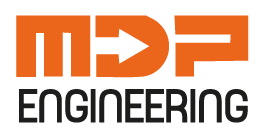The programming and commissioning process consists of several key steps to ensure seamless integration with the production line. We start with a technological audit and accurate process modeling using advanced tools such as Visual Components or RoboDK to create a digital twin of the line. Next, we optimize and configure the robot’s motion trajectories, applying geometric deviation compensation for accuracy up to ±0.05 mm. We also implement AI algorithms that enable adaptive control of the robot under changing conditions. The process concludes with comprehensive FAT (Factory Acceptance Test) and SAT (Site Acceptance Test) procedures, assuring quality and operational safety.
Key process steps:
Technological process audit
Modeling and simulation in a digital environment (e.g. Visual Components, RoboDK)
Trajectory configuration and geometric deviation compensation (accuracy up to ±0.05 mm)
Implementation of AI algorithms for adaptive control
FAT/SAT testing and final acceptance
